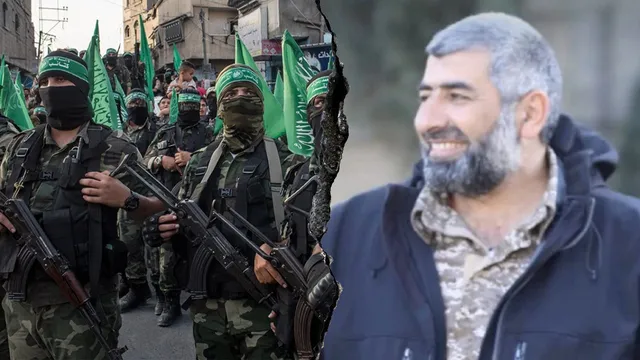
Israel kills key Hamas architect of October 7 massacre
2025-06-29 05:42- Hakham Muhammad Issa Al-Issa was a key figure in Hamas and actively involved in planning the October 7 massacre in Israel.
- He was killed in an airstrike conducted by the IDF in Gaza City, aiming to target Hamas leadership.
- This operation is part of broader Israeli efforts to dismantle terrorist organizations following the violence.
Express your sentiment!
Insights
On October 7, 2023, a brutal massacre occurred in Israel, planned and executed by Hamas, sparking significant military actions from Israel. Following this incident, on an undisclosed date in Gaza City, the Israel Defense Forces (IDF) carried out an airstrike that resulted in the death of Hakham Muhammad Issa Al-Issa. He was a significant figure within Hamas, holding the position of head of combat support headquarters. His activities included planning ongoing attacks on Israeli civilians and military personnel, as well as efforts to rebuild Hamas's operational infrastructure that had been damaged during previous conflicts. Al-Issa was not only a high-ranking member but also a co-founder of Hamas's military wing. His involvement positioned him as a crucial player in the militant organization's plans leading up to the October 7 massacre. This airstrike was part of a broader Israeli strategy aimed at dismantling Hamas following the October 7 attacks, highlighting Israel's resolve to retaliate against those deemed responsible for the violence. The IDF affirmed their dedication to continuing operations that target and eliminate high-profile terrorists linked to the attacks. The ongoing conflict has escalated tensions between Israel and Hamas, particularly escalating after the recent violent episodes. In conjunction with targeting figures like Al-Issa, the IDF has also conducted operations against other key militants in the region, including Iranian operatives like Saeed Izadi, who have historically aided Hamas. These developments represent a continuous cycle of violence that impacts not only the region but also international relations, particularly between Israel and supporting nations like the United States, which has expressed interest in a ceasefire and negotiations to facilitate peace in the area. In conclusion, Al-Issa's assassination underscores the challenges that both sides face in this enduring conflict, where military actions are met with counteractions and retaliatory strategies. The killing of such significant figures within Hamas illustrates Israel's strategy of weakening terrorist organizations that threaten its national security, emphasizing the complexity and destructiveness of the ongoing strife in the region, where civilian lives continue to be deeply affected. It remains to be seen how these events will affect future negotiations and whether a peaceful resolution can be found amidst the violence.
Contexts
Hamas, a Palestinian militant group and political organization, has a complex leadership structure that plays a crucial role in its operations and political strategies. At the helm of the organization is the Political Bureau, which is responsible for the overarching strategic decisions of Hamas. This bureau includes key figures who influence both the military and political dimensions of the organization, ensuring that decisions align with the group's ideological foundations. The leader of Hamas, commonly referred to as the 'Deputy Prime Minister,' operates from the Gaza Strip, conducting day-to-day governance and managing relationships with other Palestinian factions and regional actors. The Political Bureau's composition can change, reflecting internal dynamics and external pressures, which in turn affects the organization's direction and coherence in its objectives. Below the Political Bureau are various departments and committees that focus on specific functions such as military operations, foreign relations, social services, and propaganda efforts. The military wing, known as the Izz ad-Din al-Qassam Brigades, plays a critical role supporting Hamas's objectives through organized armed resistance against Israel. This military component is shrouded in secrecy and often operates independently while maintaining loyalty to the Political Bureau. Recent leadership transitions have emphasized the importance of this military aspect, as ongoing conflict necessitates operational readiness and adaptability. Hamas’s governance structure in Gaza showcases a blend of military leadership and political authority, where figures may straddle roles in both spheres. This duality is crucial for mobilizing resources and garnering public support, as the organization also provides social services to Palestinians. This social dimension enhances its legitimacy among the local population, reflecting a model where resistance and governance are intertwined. Importantly, leadership figures are often tasked with balancing factional interests and upholding the organization’s ideological tenets while managing the pragmatic needs of governance. The challenges facing Hamas's leadership are manifold, especially amidst ongoing regional tensions and shifts in international perspectives towards Palestine. Their ability to forge alliances with regional powers like Iran and Qatar adds another layer of complexity, influencing their military and socio-political strategies. As Hamas navigates both governance in Gaza and its resistance efforts, the structure and roles within its leadership remain integral to its evolution as a key player in Palestinian politics and the broader Middle East conflict.